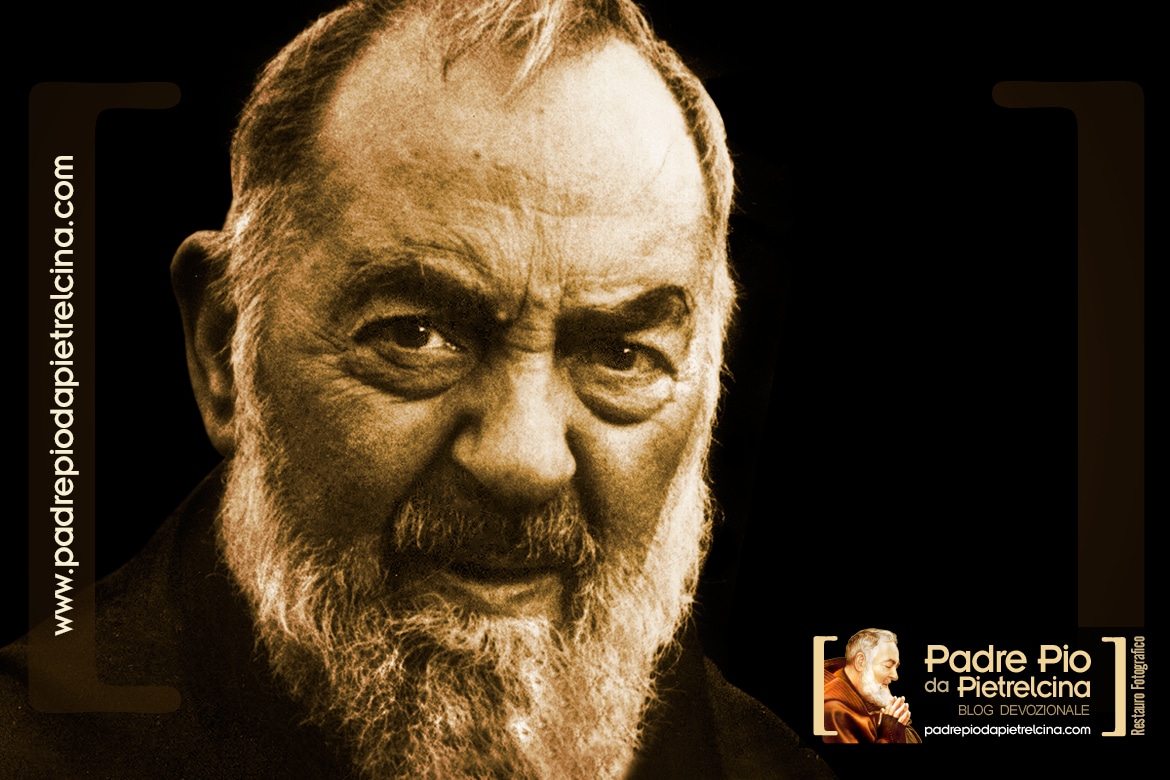On August 5, 1918, Padre Pio experienced one of the most extraordinary events of his mystical life: the transverberation, an occurrence that profoundly marked both his body and spirit. This phenomenon uniquely united him with Christ’s Passion, enabling him to share in the redemptive love revealed through the cross. His suffering, interpreted as a divine grace, became a tangible sign of his mission for the salvation of humanity.
Padre Pio: The Mystical Gift of Transverberation
The transverberation of Padre Pio stands as one of the most extraordinary and sublime manifestations of his union with the crucified Christ. This phenomenon, experienced on August 5, 1918, marked not only the friar’s body but, most profoundly, his soul, as a sign of his spiritual participation in Christ’s Passion, becoming a radiant and tangible testimony to the mystery of the Cross and Christ’s salvific love for sinful humanity. While hearing the confessions of young friars, Padre Pio was suddenly struck by an overwhelming pain, beyond human understanding. In a letter to Padre Agostino, he described the event: “While I was confessing some friars, I was overcome by such immense pain that it felt as though my heart had been pierced by a lance of fire. This pain engulfed my soul and left me speechless.”

Padre Pio: A Wound of Love and Redemption
Initially, Padre Pio interpreted this suffering as a divine punishment, a reflection of a soul humbled and trembling before the majesty of God’s mystery. Feeling overwhelmed by confusion and unworthiness, he sought guidance from his spiritual fathers, Padre Benedetto and Padre Agostino, to discern the hidden meaning of this experience. In a letter to Padre Benedetto, he laid bare his doubts: “I cannot understand why the Lord chose me for this painful experience. I feel unworthy and lost.” The advice of his spiritual fathers was like a balm for his wounded soul. Padre Benedetto, with paternal affection, reassured him, explaining that this pain was not a punishment but a sanctifying grace, uniting him more deeply to Christ’s redeeming love: “My son, what you have experienced is a unique grace. The Lord has chosen you to reflect His love and suffering. Embrace this calling with humility and gratitude.” Similarly, Padre Agostino, with wisdom and compassion, encouraged him to view the pain as a mission of redemptive love: “Your transverberation is a manifestation of divine love. Offer this suffering for the salvation of souls, as Christ offered His pain for the world.” Enlightened by the wisdom of his spiritual directors, Padre Pio came to understand that the transverberation was a wound of pure love—a singular gift that called him to participate, as a sacrificial victim in union with Christ’s Passion, in the redemption of sinners. This event left an indelible mark on his heart, hidden from human eyes but revealed in the intimate sight of God. In a subsequent letter, he described his state of soul: “A fiery blade pierced my heart from side to side. The pain was unbearable, yet it was accompanied by a sweetness I cannot describe.”
Transverberation: The Seal of Crucified Love
The transverberation was a moment of ineffable spiritual intensity, during which Padre Pio’s heart was pierced by the fire of divine love—a love so profound that it uniquely united him to the redemptive sufferings of Christ. This mystical, internal wound, which he regarded as even greater than the visible stigmata, symbolized his spiritual and spousal union with the Redeemer, calling him into a deeper participation in Christ’s Passion. Reflecting deeply on this mystery, he once confided: “Before the nails in my hands and feet, my soul was already crucified.” Padre Pio’s transverberation occurred during the spiritual offering of confession—a sacred space where divine mercy heals and saves sinners. For him, this cherished moment became a living and painful union with Christ’s sacrifice, offering his own suffering for the redemption of souls. This mystical experience was not merely a personal event but a universal witness to the mystery and power of the Cross—a call to the path of holiness and a testament to the redemptive power of suffering embraced in union with Christ. Through the transverberation, Padre Pio became a living icon of God’s redemptive love, bringing comfort to the afflicted, hope to sinners, and an invitation to every soul to fix its gaze upon the Crucified.






